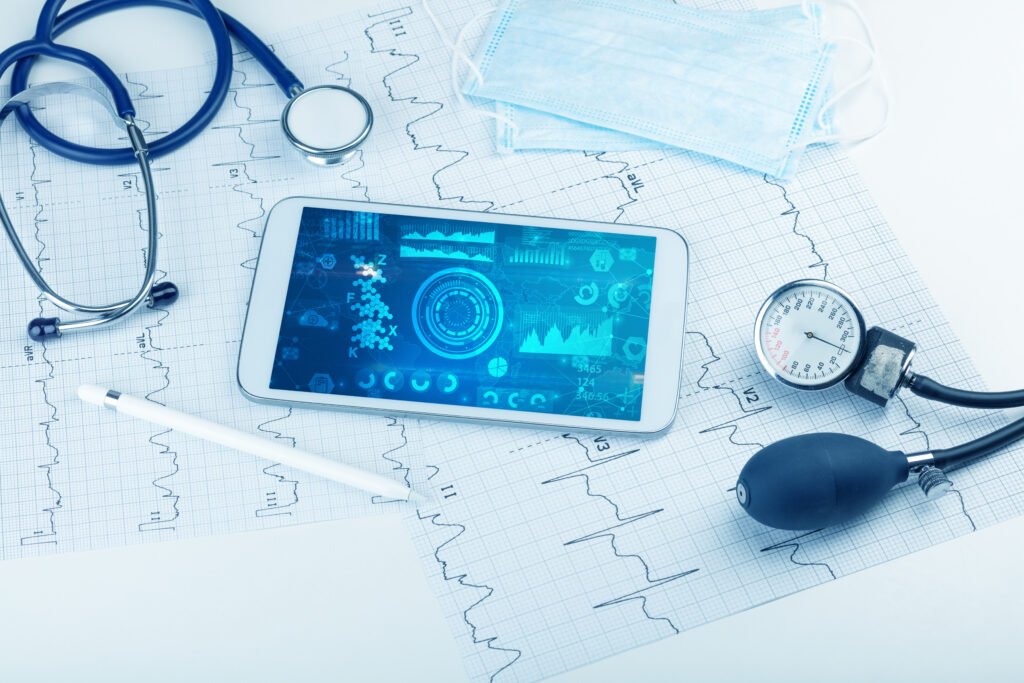As software becomes increasingly central to modern medical technology, its development must meet rigorous technical and regulatory standards. Whether it’s embedded firmware in a surgical robot, a machine learning algorithm for diagnostic imaging, or a mobile app that qualifies as Software as a Medical Device (SaMD), manufacturers must align innovation with evolving global regulations. For medical device companies, especially those new to the space, the complexity of building compliant software while navigating regulatory pathways in both the U.S. and EU can be daunting.
Technical Foundations: Standards and Lifecycle
Software development for medical devices is governed by IEC 62304, which outlines a risk-based lifecycle process. This includes requirements engineering, software architecture design, unit/integration/system testing, and maintenance planning. One of the foundational steps is assigning a Software Safety Classification (Class A/B/C), which dictates the depth of documentation and testing required. For example, Class C software—where a failure could result in death or serious injury—requires formal code reviews, traceability matrices, and detailed V&V protocols.
In parallel, ISO 14971 must be integrated to systematically identify and mitigate software-related risks, including functional failures, user interface errors, cybersecurity vulnerabilities, and data integrity issues. These risks must be tracked from hazard identification through to control implementation and postmarket monitoring.
Cybersecurity is another essential consideration. U.S. FDA now expects a cybersecurity bill of materials (CBOM) and threat modeling, especially for connected devices. Developers must align with FDA’s 2023 final guidance on Cybersecurity in Medical Devices, and for EU MDR, Annex I (Chapter II) outlines similar requirements for secure design and protection against unauthorized access.
Regulatory Pathways: FDA vs. EU MDR
In the United States, the FDA evaluates software through several regulatory pathways, depending on classification and intended use:
- 510(k): For most Class II devices, including many diagnostic and monitoring SaMDs. Requires demonstration of substantial equivalence to a predicate.
- De Novo: For novel devices with moderate risk and no predicate. Requires clinical and technical justification.
- PMA: For high-risk Class III devices, such as life-sustaining software systems. Involves extensive clinical trials, manufacturing audits, and software documentation.
- SaMD submissions** must include:**
- Software Classification
- Software Description & Architecture
- Requirements Traceability Matrix
- Validation & Verification Summary
- Risk Analysis
- Cybersecurity Controls
- Labeling and Instructions for Use
In the European Union, under EU MDR 2017/745, software can fall under Class I, IIa, IIb, or III, depending on its intended purpose and potential impact on patient health. Rule 11 of the MDR specifically addresses software:
- Software providing information for diagnostic/therapeutic decisions typically falls under Class IIa or higher.
- Clinical decision support, imaging analysis, or dosing calculation software may be Class IIb or Class III.
- Manufacturers must prepare a Technical Documentation File (Annex II), which includes:
- GSPR Checklist
- Clinical Evaluation Reports
- Postmarket Surveillance Plan
- Software Lifecycle File (per IEC 62304)
- Risk Management File (per ISO 14971)
- Usability and Cybersecurity Evidence
CE marking also requires conformity assessment by a Notified Body for Class IIa and above, which entails audits of your QMS (ISO 13485) and technical documentation reviews.
Omnee Strategic Solution Support: Bridging Development and Regulatory Success
At Omnee Strategic Solution, we help medical device companies succeed at every step of software development and regulatory approval. Our approach combines deep technical expertise with strategic regulatory insight. We guide clients in:
- Implementing IEC 62304-aligned SDLCs with appropriate design control integration
- Creating risk management files that tie directly to software architecture and test evidence
- Conducting V&V planning with a focus on traceability, test coverage, and clinical relevance
- Authoring complete regulatory submission packages, including FDA 510(k)s, De Novo applications, and EU Technical Documentation
- Preparing for Notified Body or FDA inspections, including mock audits and design history file reviews
Whether you are building AI/ML-powered diagnostics, wearable device software, or interoperable mobile health platforms, Omnee Strategic Solutions ensures that your development process is not only technically robust but also fully aligned with global regulatory frameworks.
Conclusion
In a regulatory landscape where software is increasingly scrutinized, success depends on integrating quality, security, and clinical value into the heart of your development process. With FDA and EU regulators raising the bar on software validation, cybersecurity, and postmarket monitoring, the margin for error is slim. Omnee Strategic Solutions provides the expertise, infrastructure, and execution support you need to bring compliant, innovative medical software to market—confidently and efficiently.

